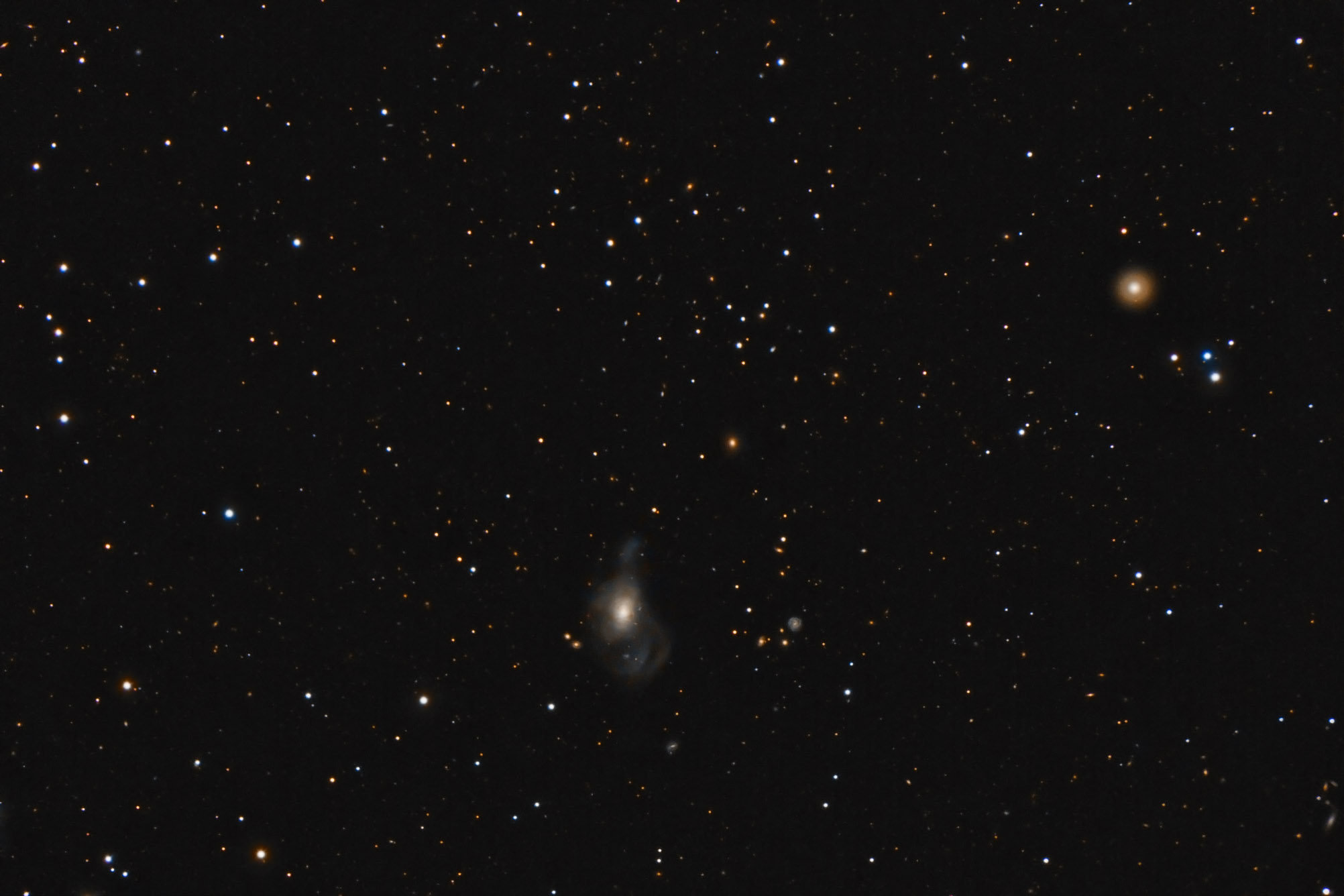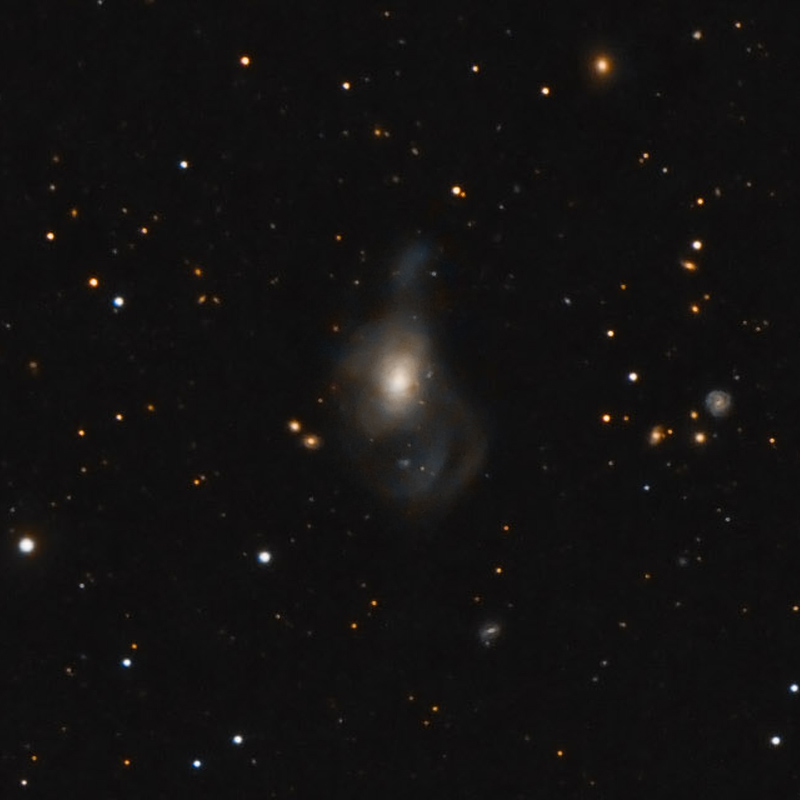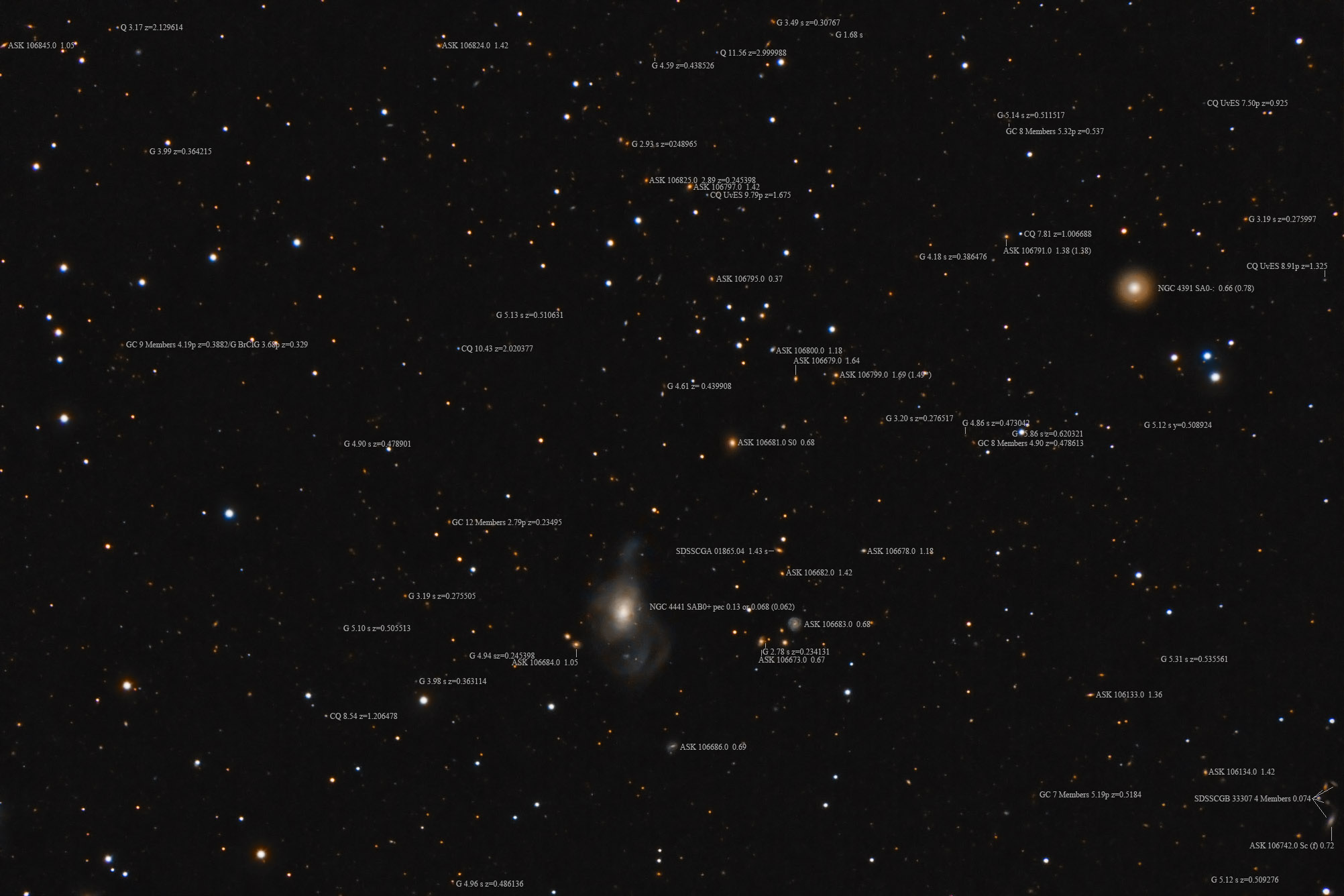Object name: NGC4441Designation(s): NGC4441, NGC4391, This is another great galaxy ignored by amateurs who mostly prefer retaking the same stuff over and over again. After searching several image forums and AstoBin I came up with exactly ZERO images of this great object. Looking a bit to find these great objects must be too difficult so many take the same old stuff over and over ad nauseam.
NGC 4441 is a very disturbed galaxy that belongs in Arp's catalog of peculiar galaxies. Arp included three in various stages of merger, Arp 104 (NGC 5218) being the earliest and Apr 214 (NGC 3718) Arp 160 (NGC 4194) and NGC 4441, that didn't make Arp's list as later stages of merger. https://www.aanda.org/articles/aa/full_html/2014/09/aa23548-14/aa23548-14.html
http://www.mantrapskies.com/image-archive/ARP_GALAXIES/ARP104/ARP104L9X10R5X10X3G4X10X3B2X10X3R.jpg
http://www.mantrapskies.com/image-archive/ARP_GALAXIES/ARP160/ARP160NGC4194L4X10RGB2X10R1CROP125.JPG
http://www.mantrapskies.com/image-archive/ARP_GALAXIES/ARP214-NGC3718/NGC3718L12X10RGB4X10R.JPG
Another paper https://www.aanda.org/articles/aa/full_html/2010/01/aa09686-08/aa09686-08.html says it is the result of the merger of a spiral and elliptical galaxy. In any case, it is one heck of a messed up galaxy. I suppose it will eventually settle down to be an elliptical galaxy.
Only 4441 isn't an Arp but could have been one. Why he chose to omit it I don't know. Also he put these obvious (with today's knowledge but not his back when the atlas was prepared) mergers into three different categories, Arp 104 in "Elliptical galaxies connected to spirals", Arp 160 in "Disturbed galaxies with interior absorption" and Arp 214 in "Galaxies; Irregularities, absorption and resolution" whatever that means. Where would he have put NGC 4441? I can think of a half dozen categories it would fit. Arp was interested in appearance not in the why so has no classification for mergers even though many of his entries are the result of either direct mergers or at least interaction with another galaxy.
Notice the odd narrow dust lane crossing just below the very core of the galaxy. It ends with a blob of dust at its right end. It may be due to the merging galaxy being at a nearly right angle to the face on galaxy.
The only other NGC galaxy in the image is just a basic SA0-: galaxy. Both were discovered by William Herschel on March 20, 1790. Neither are in either H400 observing program from the Astronomical League.
14" LX200R @ f/10, L=4x10' RGB=2x10', STL-11000XM, Paramount ME Related Designation(s):2MASS J12251876+6456004, 2MASS J12272032+6448064, 2MASX J12251872+6456008, 2MASX J12272040+6448056, 2MASXi J1225188+645600, AKARI J1227208+644804, ASK 106512.0, ASK 106685.0, CGCG 1223.0+6513, CGCG 1225.0+6505, CGCG 315-037, CGCG 315-039, CGPG 1223.0+6513, GALEXASC J122518.78+645600.5 , GALEXMSC J122518.75+645601.8 , HDCE 0722 NED001, IRAS 12250+6504, IRAS F12250+6504, LDCE 0867 NED109, LDCE 0889 NED006, MCG +11-15-053, MCG +11-15-056, NGC 4391, NGC 4441, NGC4391, NGC4441, NSA 019338, NSA 019349, NVSS J122720+644809, PGC 040500, PGC 040836, SDSS J122518.78+645600.5, SDSS J122518.79+645600.4, SDSS J122518.79+645600.5, SDSS J122720.34+644805.4, SDSS J122720.34+644805.5, SDSS J122720.35+644805.3, SDSS J122720.35+644805.4, SDSS J122720.36+644805.3, SDSS-g-fon-0289, SDSS-i-fon-0260, SDSS-r-fon-0281, UGC 07511, UGC 07572, UNAM-KIAS 0925, UZC J122518.8+645600, UZC J122720.4+644806, VII Zw 454, [M98j] 157 NED11, [M98j] 157 NED12, [MGD2014] 1225.0+6504, [TTL2012] 061793, [UIY2014] 21, | | 

